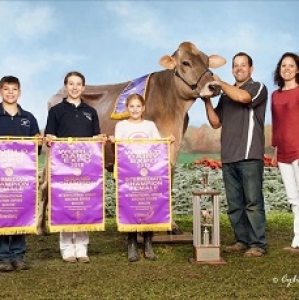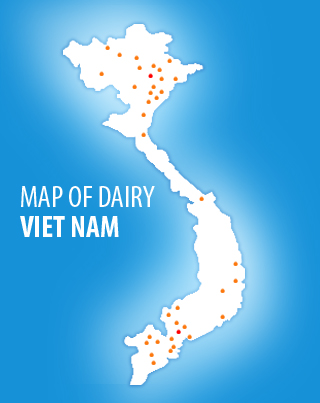News
The Equilibrium of Exhibiting at World Dairy Expo While Managing the Dairy at Home

Q: What is your home setup like, between the show cows and the rest of the herd?
Jenlar: We are a 140-cow dairy, 80% Holsteins and 20% Brown Swiss. We installed two robots in 2017, and all of the cows are milked in the robots, including the show cows. Some of our cow families are bred for type, and we’re also breeding to make good, profitable, trouble-free cows that work well in a robotic system. The show cows have a separate pen, so they can have a little bit of a different diet and a supplement of hay. In addition to family, we have one employee.
Oakfield Corners Dairy: We’re milking at four locations in New York and Ohio, with a total of 9,000 milking cows. We have a small barn where there are up to 28 show cows at any one time. The show cows are in box stalls, two cows per pen, milked in a four-stall step-up parlor. This way, we’re able to keep them on a show-type diet all year long, and we can make sure they’re bred back to calve correctly every year.
R&R Dairy: We milk 1,200 cows on a single property. We have seven employees outside of family and milk in a double-24 parlor. The show cows come through the parlor first; they have a separate barn. Half of our show herd is on a pack while the other half is in box stalls and larger pens, but everybody gets individual care. There are 18 in the show herd. The entire herd, including the show cows, is on heat detection and rumination collars.
Q: What is it like to prepare for World Dairy Expo?
Oakfield Corners Dairy: It’s a lot of work to be away for that long, but it’s something we enjoy doing. We’re very passionate about it, it’s part of our business model and marketing program. It’s extremely important from an enjoyment and social perspective, but also a business standpoint. Even if we didn’t have cows there, we would still go watch and enjoy the Trade Show.
R&R Dairy: My parents were really into dairy judging for Cal Poly and have always really appreciated show cows. Our goal is to be able to disperse our genetics via embryo work. We’ve been able to develop some really nice cows and get them into our industry through the show in Madison. We have been able to sell some really nice cows, and it’s rewarding to watch them do good things for other herds. We find profitability in that marketing aspect of World Dairy Expo.





















